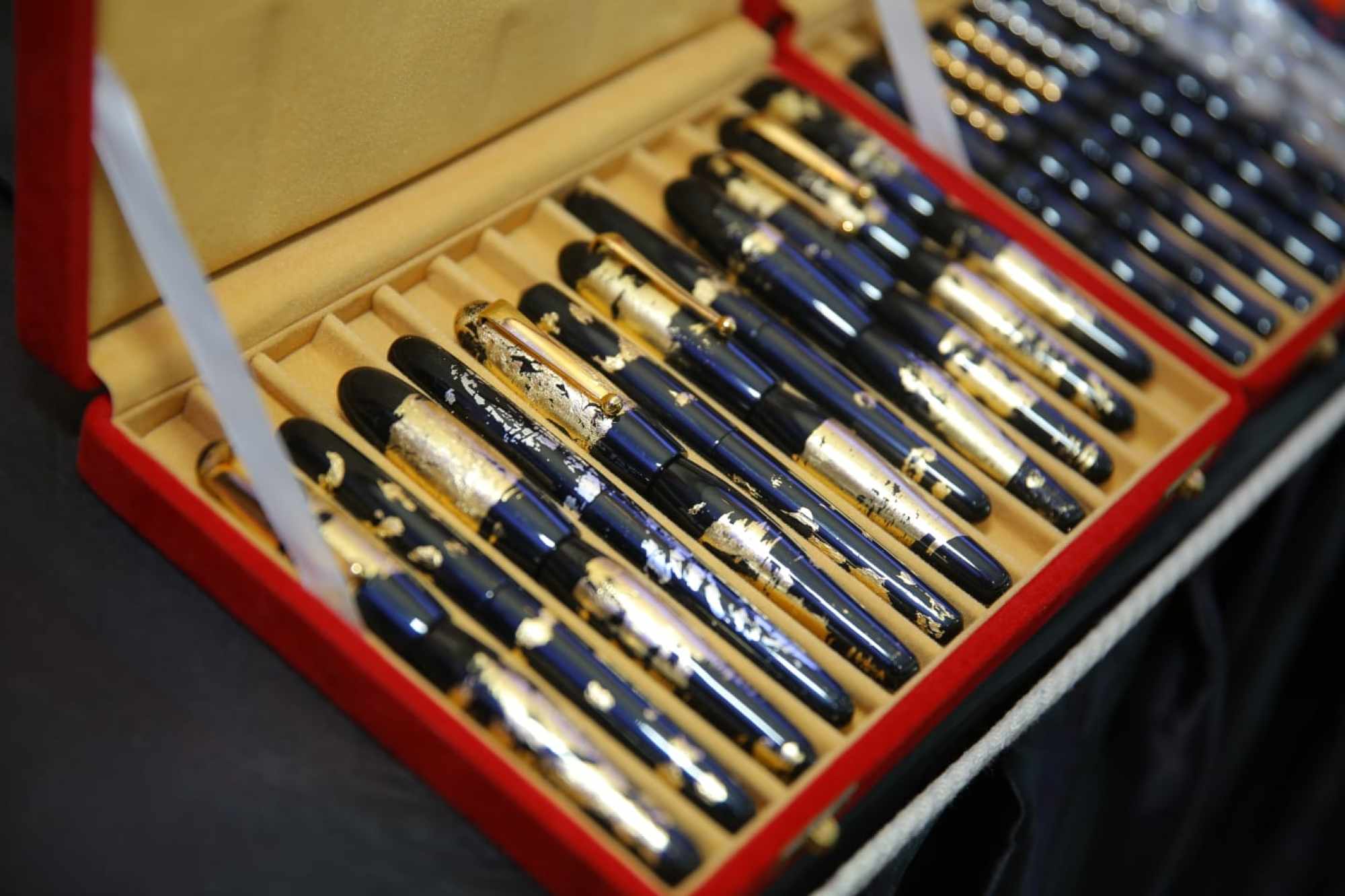
India’s fountain pen history continues to be written by vintage shops, young fans seeking ‘a touch of elegance’
- India has a long tradition of fountain pen-making and vintage pen shops, where enthusiasts send their cherished items for repair
- The city of Kolkata, the birthplace of India’s fountain pen industry, hosts a pen festival drawing thousands of people each year
He gingerly unscrews a fountain pen, then removes a nib with two fingers and pulls it away from its body. Next, the 24-year-old takes out the cartridge and pours water into the feed and through the nib to flush out any hardened ink or sediment.
“We have to be extremely gentle with an ‘ailing’ fountain pen, as we would be with an ailing patient,” he said. “The older the pen, the more care it needs.”
Reyaz is a co-owner of Pen Hospital, a store that has sold and repaired fountain pens for more than 75 years.
He treats every ailment of fountain pens – skipping, intermittent ink flow, feathering, scratchy nib, leaking or dripping and ink stains. A common problem, he said, is the melting of the rubber tube in fountain pens because of the hot tropical climate in many parts of India.
‘G20 coming out party’: India can be bridge in polarised world, say analysts
Pen Hospital’s “patients” include every elite fountain pen, including Montblanc, Campo Marzio, Sheaffer, Waterman, Pelican and Pierre Cardin.
Recently, Reyaz replaced the metal tube of a 93-year-old vintage lever filler Parker fountain pen, which would be worth 100,000 Indian rupees (US$1,200) now.
“Restoring vintage pens is an extremely tricky job because the inner parts of those pens are not available in the market any more, and the owners want their pens to remain operational at any cost,” said Reyaz, adding that the fountain pens he repairs are in the price range of 100 to 500,000 rupees.
Reyaz is the fourth-generation owner of the shop, which was established by his great-grandfather Mohammad Samsuddin, who arrived in erstwhile Calcutta, now Kolkata, from neighbouring Bihar in 1947.

Reyaz’s grandfather Mohammad Sultan took over the business in the 1980s before passing it on to his sons, Mohammad Reyaz and Mohammed Imtiaz, who repaired imported fountain pens and India-made pens including Artex and Vazir.
Since his father Mohammad Reyaz’s death last year, Shahbaz Reyaz has been running the shop with his uncle, Imtiaz.
Although Reyaz Jnr never received any formal training on repairing pens, he learned the craft while observing his father juggling with springs, rubber tubes, water, liquid detergent, buffing brush, polish and a pumping converter system.
Reyaz’s clients range from writers, judges, doctors, journalists, government officials and filmmakers, including the late Oscar winner Satyajit Ray.

But his client profile has changed over the years, especially after the pandemic. Apart from pen connoisseurs, who keep a variety of fountain pens in their collection, some younger men and women have started taking a deep interest in fountain pens as “collectible” items, Reyaz said.
These young people also come into Pen Hospital to know more about the history, timeless appeal and aesthetics of fountain pens, he said.
Kandan M.P., the co-owner of Tamil Nadu-based handmade fountain pen manufacturer Ranga Pens, said the free time that people had during the pandemic led to them aspiring to buy luxury pens.
“People want to give a touch of sophistication and elegance to their writing,” said Kandan, whose clients come from all over the world, especially Japan, Hong Kong, mainland China and Indonesia.
Many look at fountain pens with refillable ink cartridges or converters as a sustainable alternative to disposable plastic pens, he said.
Indian folk art becomes canvas for social change and ‘communal harmony’
Sayak Kumar Adhya of 100-year-old Pen Club, a Kolkata-based store that sells more than 60 national and international brands, said that in this digital communication age, a section of younger people wants to focus on the art of handwriting to add a personal touch and authenticity, and are keen buyers of fountain pens.
Globally, the luxury pen market, which was valued at US$2.3 billion in 2021, is projected to reach US$3.8 billion by 2030, according to a report by India-based Straits Research firm. In comparison, the global fountain pen market was estimated to be valued at US$955 million last year.
The Kolkata connection
The history of fountain pens can be traced to feather quill pens that were widely used in Europe in the 10th century. The first-ever fountain pen with a reservoir of ink and a non-leaking nib was invented in 1827 by Romanian Petrache Poenaru, who received a French patent for it. Kolkata has a rich history of fountain pen manufacturing as well.
Radhika Nath Saha, who hailed from then Calcutta, was a pioneering maker of fountain pens who set up the first pen factory in India in 1907. In his book titled Unsung Hero of Indian Fountain Pen, writer Sovan Roy said Saha was the first person to be awarded an American fountain pen patent in India in 1910.
Another businessman from the same city, Fanindra Nath Gooptu, produced penholders initially in 1905 before he diversified into making dip pens and fountain pens.

Apart from running his store, Adhya had also organised a three-day festival for fountain pen enthusiasts in the past two years in Kolkata, with this year’s event in April attended by more than 15,000 people.
“At the festival, collectors and vendors exchange their love for fountain pens. They discussed the technicalities of pen repair, pen history, calligraphy and pen design,” Adhya said.
Having made many repairs at the Pen Hospital, Reyaz advised his customers to take basic steps to avoid sending their treasured items to his shop. A fountain pen with blue ink should have its parts washed separately with water every 15 days, while a fountain pen with black ink should be washed every 10 days, according to Reyaz.
“Fountain pens can last for years. All they need is love and care,” he said.
